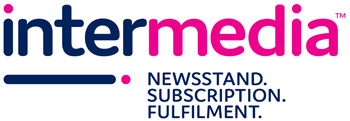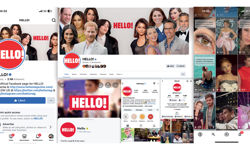
Q: For publishers looking to improve their performance at retail, what advice would you give them?
A: For publishers looking to improve their retail performance, enhanced targeting of the right audience is key. Misaligned targeting can lead to poor results, so it is crucial to clearly define your target audience in order to create a clear, targeted and measurable distribution footprint.
An annual retail plan should reflect the overall publishing plan in terms of seasonality trends, events, key editorial features so that the planned retail activity can deliver maximum impact. This should remain flexible to respond to market behaviour and changing trends, but should serve as the north star.
Cover price strategy is also becoming ever more critical, not just at an individual brand level, but for the category too. Retailers are increasingly looking at margin contribution which determines space allocated to the magazine category, as well as range listings.
Consumers are seeking a fair value exchange for the increasing price paid for their magazines of choice, which have increased multiple times in recent years owing to significantly higher print and production costs. Price should therefore reflect each of these important drivers.
Equally important, is the crucial matter of optimising the copy allocation process. Copy allocations should directly reflect the stated retail plan and associated metrics. Current and recent inflationary pressures in terms of print and production costs means that optimising the required levels of availability whilst minimising unnecessary levels of unsolds, delivers direct commercial benefits not only to publishers, but the entire supply chain. Utilising the detailed and sophisticated levels of data now available should underpin not only the planning process, but the execution and analytical review too.
Q: What are the key components of a successful subscriber acquisition campaign?
A: When assessing any marketing campaign, particularly acquisition efforts, the primary performance metrics are cost per acquisition vs the projected revenue over the lifetime of the subscription, often referred to as LTV.
Identifying the target audience is crucial, as multiple demographics may need to be considered. Understanding how each demographic values the product will shape the marketing message to ensure subscribers’ perceived needs are met, and this again raises the metric of what is seen by the subscriber as a fair exchange of value.
Successful campaigns align the price with audience expectations. Selecting the optimal communication channels to reach the audience is another key decision — recognising their preferred method of interaction significantly boosts response rates and fills the top of the sales funnel.
Lastly, ensuring a seamless and frictionless onboarding process is vital. A simple, straightforward sales funnel enhances conversions and further reduces acquisition costs. By delivering on your campaign’s promises and meeting customer expectations, a successful acquisition campaign can be achieved.
Q: How should publishers’ retail and subs strategies complement each other?
A: Publishers’ retail and subscription strategies should complement each other by using retail as a gateway to subscriptions. Retail builds brand recognition and attracts new readers, while subscriptions foster long-term relationships. Seamlessly integrating both of these factors ensures consistent messaging and maximises audience reach and revenue.
For many publishers, the retail universe is becoming increasingly challenging, however there remains huge potential to extend the retail sales runway whilst enhancing their overall subscription propositions which can deliver increased customer data, insight, intelligence and importantly, direct relationships with their readers.
Q: When looking to diversify their business models, what do publishers need to consider?
A: When diversifying business models, publishers should first and foremost evaluate audience needs and preferences to identify potential opportunities. Key considerations include exploring new revenue streams like digital subscriptions, events, or eCommerce, ensuring alignment with their brand. Additionally, they must assess the scalability of these models, adapt their content strategy accordingly, and invest in the right technology for a seamless delivery. Understanding market trends and competitor strategies is essential to making informed decisions and remaining competitive.
Q: Bookazines are growing in popularity. What makes a successful bookazine?
A: Both bookazines and more recently books, present significant revenue driving opportunities for publishers.
One of the greatest assets for many publishers is archived content — and particularly evergreen content which is timeless and can be packaged and published in a variety of different ways to provide compelling new products.
There are a few factors to consider when creating a successful bookazine. It’s not easy combining the in-depth quality of a book with the visual appeal of a magazine but implementing a few key elements will help to achieve the desired outcome.
First, it’s good to have a strong niche, focusing on a clear or specialised topic that appeals to a dedicated audience. Next, the content must be high quality, including well-researched articles — and preferably evergreen content — that offers real value, depth, and directly answers or addresses audience questions / pain points. Lastly, the bookazine should have a high production value, such as thicker paper or a glossy finish, to enhance perceived value.
Q: Looking ahead to 2025, what do you see as the main opportunities for publishers?
A: The future of magazine publishing is evolving rapidly, with digital transformation and shifting consumer behaviours creating new opportunities. Publishers who embrace innovation can expand their reach, engage audiences in new ways, and generate new revenue streams.
For example:
Diversification of revenue streams
- Membership models. Beyond traditional subscriptions, offering a membership model with exclusive perks such as premium content, events, or early access to special editions can provide steady revenue.
- E-commerce integration. Partnering with retailers or offering in-magazine purchases allows readers to buy directly from articles (eg. fashion, tech, lifestyle). This “shoppable” content trend, especially in lifestyle and fashion magazines, can boost affiliate income.
- Sponsored content and native advertising. As consumers become more resistant to traditional ads, brands are turning to sponsored articles that fit seamlessly into editorial content. Magazines can capitalise on this by working closely with advertisers to produce native ads that add value to readers.
Niche and specialised content
- Hyper-targeted product. Instead of focusing on broad topics, magazines can succeed by targeting smaller, highly engaged niche audiences, such as hobbyists, or specific professional fields. Niche publications often command higher loyalty and can charge premium prices.
- Personalised content. Leveraging data and analytics can help publishers understand reader preferences and deliver more personalised content. This could mean customised covers, curated reading lists, or personalised recommendations for digital subscribers.
Events and experiences
- Live events and conferences. Expanding into events — whether in-person or virtual — allows publishers to engage with their audience on a deeper level. Magazines with a strong brand and community following can host industry-specific conferences, workshops, or consumer events that tie into their editorial content.
- Virtual experiences. With the rise of virtual events and webinars, magazines can host exclusive online experiences, panels, interviews, and interactive Q&A sessions, providing new ways to build reader engagement.
Audio and Video Content
- Podcasts. Many magazine publishers are branching into podcasting, leveraging their editorial expertise to create engaging audio content. Podcasting can help magazines connect with new audiences, repurpose existing content, and build deeper reader engagement through storytelling, interviews, or discussions on relevant topics.
- Video content and streaming. Short-form video (eg. YouTube, TikTok, Instagram) is a powerful tool for publishers to extend their content to a visual medium. Magazines can create behind-the-scenes content, interviews, how-to guides, or even documentaries based on their editorial themes.
The future of magazine publishing is filled with opportunities for those willing to innovate. From expanding into digital platforms, leveraging new technologies to building communities through events and personalised experiences, publishers can embrace these trends to stay relevant and profitable in an ever-changing media landscape.
Q: What’s in the pipeline from InterMedia?
A: InterMedia remains committed to delivering a fully-integrated, multi-channel approach through its service offerings. InterMedia is now one of three companies which collectively form the InterGo Group, namely InterMedia for retail newsstand distribution and subscription marketing, InterSend for eCommerce fulfilment and InterDirect for direct mail.
We have been working hard on streamlining our services and are currently in the process of building brand new websites for each of the brands underneath the InterGo umbrella, honing our offerings and increasing the ease and ability for publishers to partner with us across our group services.
While print media continues to be a core focus, we are increasingly exploring opportunities to offer additional products (both affiliated and non-affiliated) to print consumers, driving revenue growth and expanding our services to include books and academic journals as well as eCommerce fulfilment of non-print media brands or adjacent products.
This evolution aligns with our clients’ ever-changing needs and ensures our business continues to thrive beyond traditional publisher offerings.

About us
InterMedia Brand Marketing Ltd serves the growing circulation marketing needs of independent publishers.
InterMedia is part of the InterGo Group of companies, alongside eCommerce fulfilment provider InterSend and direct mail operator InterDirect.
We are the UK’s leading provider of fully integrated circulation marketing and distribution solutions. We service over 80,000 subscriber calls and distribute over 3,000,000 copies every year across 86 countries.
We are forward-thinking with a wealth of experience allowing us to embrace the modern media landscape and deliver cost-effective solutions without compromising on quality. Our team of single discipline experts offer innovative, tailored services. We provide a comprehensive range of circulation marketing and distribution services to help grow total audience across every route to the consumer. Our job is to connect brands with consumers in the most efficient, reliable and cost-effective ways. We enable our clients to get on with what they do best – publishing exciting and successful magazine brands.
Web: www.inter-media.co.uk and www.inter-send.co.uk
Email: getintouch@inter-media.co.uk
Tel: +44 (0) 1293 312001










